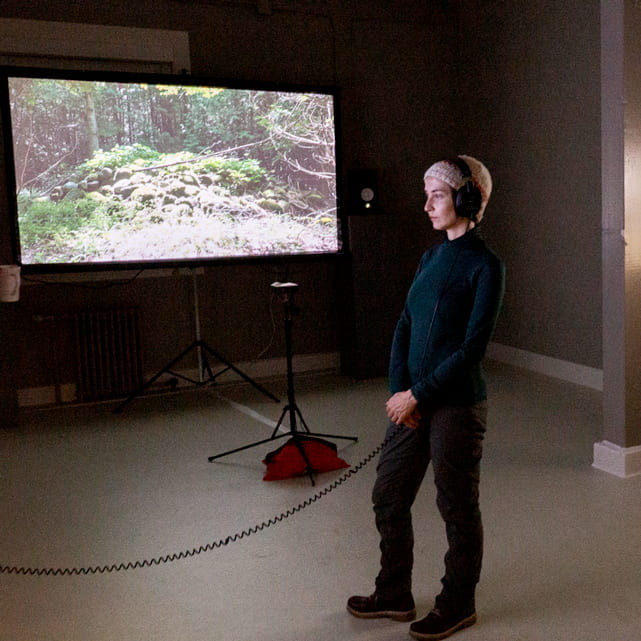Over this past semester I’ve been working toward finalizing my capstone project as part of the Critical Media Practice specialism. The project is being developed in parallel with my doctoral research which investigates forest management and processes of urbanization, with the overall goal of providing an insertion point through which to critically analyze the potential of planning and design within these spatial contexts. The capstone has enabled a deep dive into a discrete slice of these dynamics, and explores incentivized landscapes of forest stewardship in the region of southern Ontario. The work navigates the various ways of defining and valuing these forests, and asks the question ‘what is a managed forest?’ Methodologically, the project investigates how artistic research contributes to an understanding of these landscapes, as well as how, and through which modalities of engagement participants are involved in their stewardship. By integrating video as part of my research methodology, I ask: what does this particular approach -one that blends fieldwork with video installation- offer?
A work in progress, this piece has been reformatted several times over the last year. It was first conceptualized as a three-channel video installation, which then transformed into a two-channel piece that paired camera movement and montage to explore different ways of connecting spaces separated geographically, but united through policy and stewardship. In this first iteration, I was interested in what was revealed when this footage was coupled to create new digital landscapes combining different scales, locations, and movements. The pairing brought attention to ecological similarities while juxtaposing footage to highlight differences in location, scale, activities and time.
Coming back to the piece this semester, and after a summer of collecting additional footage on the stewardship process, one of the goals of this next iteration was to focus on the work’s structuring logic that would allow the viewer to make sense of the variety of visual information presented. The themes of landscape, labor and technology were used as a way of organizing the footage. While these topics had been more implicit in the previous work, the aim of this version was to foreground these aspects as a framework to articulate the project’s narrative.
This reformatted piece, which was the subject of my most recent critique, featured a large projection that the viewer was confronted with immediately upon entering the room on the far wall flanked by two flat-screen TV monitors with headphones. The footage on all three cases was looped, however they were not synchronized. One of the monitors depicted vignettes of landowners involved in stewardship activities; the other combined different ways of understanding these landscapes through various technologies such as aerial archival imagery, as well as car and drone footage. The large projection and its associated soundscape depicted remnants of human intervention in these landscapes and the interplay between these introduced objects and the biophysical ecology of the sites under consideration.
The critique brought together faculty from the department of Art, Film and Visual Studies as well as graduate students in the CMP steam to offer feedback. Having spent so much time with the material, and going through many editing combinations, these critical comments were invaluable to garner how this latest version was being interpreted. What became apparent was that connections I had thought to be explicit were less apparent to the viewer– also the ways in which the space was used gave me clues in terms of how the installation might be rearranged to better to direct the viewers interaction with the piece. Another aspect of the project that became immediately apparent was that while three channels articulated a useful means for me to engage with the large amount of video footage that I had collected during my fieldwork, this final articulation ended up diverging from my original intentions in a more problematic way. The work instead seemed to reinforce the separation of these processes from each other – reading as more of a categorization than a hybrid of cohesive and concurrent processes. The critique was also useful in highlighting the fact that my own voice –my critique– of these forested sites had been lost, which is something that I will be more cognizant of going forward as I develop the project’s final iteration.
Working on this capstone project has allowed me the opportunity to experiment with, and bring together, an approach to research that integrates video and fieldwork alongside the broader ambition of the installation which aims to connect geographically disperse and often unrecognized combinations of human and non-human activity. Though the footage is but a brief slice of a much longer history, it is my goal that this project helps to complicate these relationships, bringing attention to the various dynamics of stewardship and ways of seeing these spaces.
Julia Smachylo is pursuing a Doctor of Design degree at Harvard’s Graduate School of Design and will be presenting her CMP capstone project, “Silvic Stewards,” in the CMP Exhibition in April.
